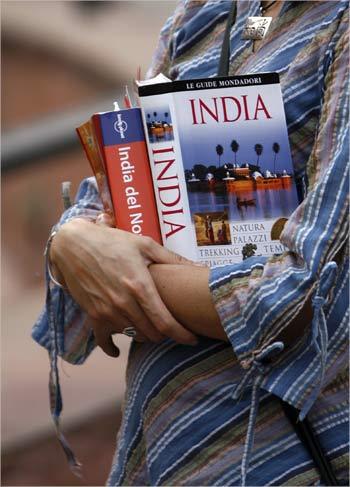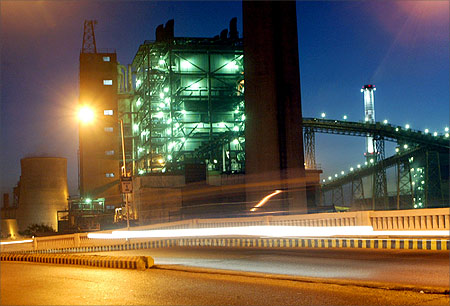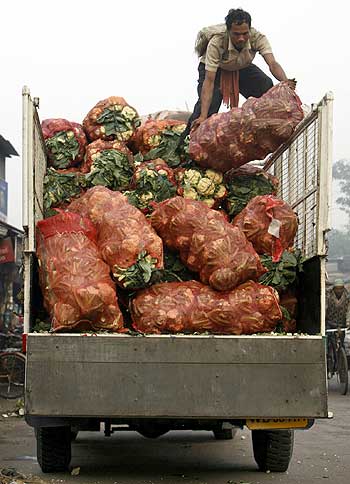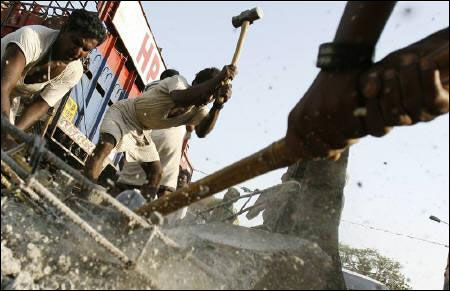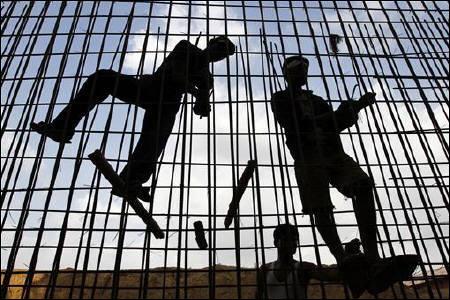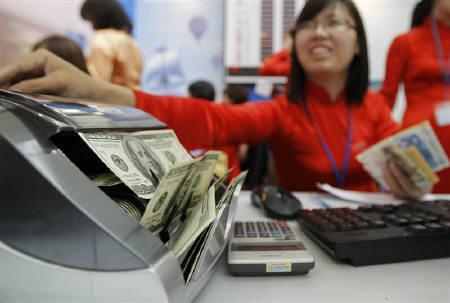 | « Back to article | Print this article |
India booming? Well, not exactly!
The World Bank in 2010 estimated that having 'no toilets' costs India $54 billion every year because of premature deaths, treatment for the sick, lost productivity, as well as restricted tourism revenues, writes Frank-Jurgen Richter.
India is a bustling, vibrant and noisy nation.
Many of its people smile openly and offer help 'Oh yes, sir'. . . but it only ranks 142 (of 158) in the 2012 Global Peace Index, having very poor scores on its society's perceived criminality, access to weapons and wars fought.
The overall 'Peace' rankings of its near neighbours are: Pakistan (149), Bangladesh (91) and China (89).
Perhaps there is something else behind India's smiles?
Click NEXT to read further. . .
India booming? Well, not exactly!
Data aggregated by World Economics on India's progress show growth, but not booming times.
The official Indian gross domestic product figures were rising through 2010, but the trend faltered slightly ending at eight per cent year-on-year.
This growth is reflected in the OECD's Composite Leading Indicator that also dipped to a low of 95 in mid-2011 but lifted to 98 by February 2012 -- remaining below the desired 100 or slightly higher: consumers in general indicate reasonable optimism.
Since 2000, the electricity generation capacity of India has doubled.
In fact, the coal-fuelled supply is now slightly more than the total supply in 2000 -- which is somewhat worrying for its pollution potential.
Click NEXT to read further. . .
India booming? Well, not exactly!
Electricity demand continues to outstrip supply by about 8.5 per cent across India, with the western region faring the worst (lacking over 11 per cent) causing regular brown- or black-outs.
Railway freight load dipped rapidly through the spring and summer of 2011 but has since picked up to finish the year with an eight per cent year-on-year increase -- once more indicating general growth.
India's rail network is the largest in Asia with a track length of over 100,000 km and 1.5 million employees that organise 11,000 trains a day, and its ministry likes to think it is the backbone of growth.
Worryingly, house prices have continued to rise, suggesting the potential for a bubble.
Click NEXT to read further. . .
India booming? Well, not exactly!
Also, there is an increase in the nation's debt levels -- a factor exhibited across Asia in China, Japan and South Korea.
India, therefore, needs to tempt inward investment to balance its books (given some large outflows by big groups like Tata who are investing abroad).
Unfortunately, the government promotes mixed signals -- while suggesting there is ample room for outsider inputs, it too often backtracks or allows the slow-working legal system to nullify inward investment.
Such aspects deter investors in sectors in which India says it is looking for new partners, like in the aircraft industry.
There are no takers '. . . others have been bitten, we are shy!'
Click NEXT to read further. . .
India booming? Well, not exactly!
India's latest Census (2011 data) shows some of the difficulties facing the government.
It has a population of 1.21 billion, which surely must be difficult to manage over its many regions.
Its gender disparity is growing, down from 927 girls per 1,000 boys 10 years ago to 914 now.
It is estimated that 15 million girls were wiped out -- simply not born -- in India over the last decade, this rates higher in China (25 millions) where the state's one-child policy has become a one-son policy! In commercial terms, Chinese medical ultrasound manufacturers see India as a big market.
The census found a continuing increase in literacy.
Click NEXT to read further. . .
India booming? Well, not exactly!
Overall, 74 per cent of the population (seven years and older) is listed as literate -- 82 per cent for males and 65 per cent for females: the latter rising little faster than for males over the decade.
However, often a household member is reported literate if he or she has had any schooling at all.
In this case, literacy may be marginal at best; people can lose literacy through lack of use in daily life.
That is important since there is greater focus on access to official documentation -- one's land rights papers, for instance.
Or, the reading of announcements presented by the state via the internet.
Click NEXT to read further. . .
India booming? Well, not exactly!
But Internet penetration is just three per cent of the population, while 45 per cent own or use mobile phones and 47 per cent of households have a television.
Large towns and the increasing sprawl of rural communities has led to severe sanitation issues -- only 49 per cent of households have drainage, and another 33 per cent access only open drains.
As for the rest -- well, you may imagine!
"Open defecation continues to be a big concern for the country as almost half of the population do it," notes Registrar General and Census Commissioner C Chandramouli.
He omits to mention the difficult physical and social infrastructures: towns are too crowded, and the ancient caste system.
Click NEXT to read further. . .
India booming? Well, not exactly!
Each of the four varna are divided into jatis (that is, sub-castes) and they all 'stand over the untouchables' or dalit who themselves are fiercely possessive of a role that guarantees a low income as toilet cleaners.
The dalit are an intrinsic part of the inflexibilities.
The World Bank in 2010 estimated that having 'no toilets' costs India $54 billion every year due to premature deaths, treatment for the sick, lost productivity, as well as restricted tourism revenues.
It cites a cost of $300 to build a toilet that could bring a return of $3-$34 for every dollar spent -- an economic and humanitarian opportunity of historic proportions!
I suggest it is time for India to rebalance itself -- to become less belligerent, more peaceful -- turning its 'arms into ploughshares'.
Or better -- by sorting out its social and health issues.
By reorganising its soft infrastructure, it will create more hope for all and be more able to compete globally in the future.
The writer is founder and chairman of Horasis, a global business community
